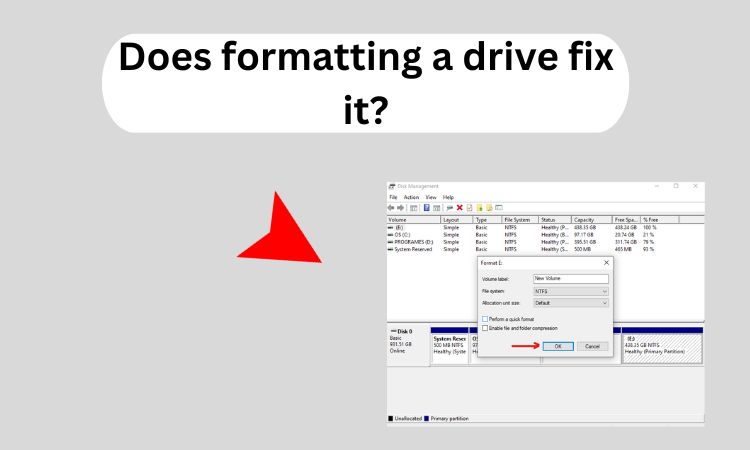
Summary: There comes a time when an internal or external hard disk starts to misbehave; generates error messages, slow response or shows signs of corruption. In such a scenario, many users tend to ask themselves if taking the drive out and formatting it would be the solution to the problem. Most people generally view formatting as a last resort, a way of getting rid of existing problems, but does formatting a drive fix it? In this article, we shall look into the aspects of doing formatting, its advantages, and the propriety of the claim that formatting fixes a damaged drive.
Read More: Wipe hard drive windows 10?
Reasons to Format a Drive
There are a number of aspects that you may deem important enough to perform a drive format:
- Corruption: After a bad sector or an improper shutdown, a drive may become corrupted, and formatting assists in eliminating invalid data structures.
- Virus Infection: Excessively stubborn malware infested systems compel reformatting of the entire disk to get rid of the virus.
- Performance Issues: A hard disk that operates slower than expected, performs a full format to remove unnecessary files in the file system and destroy the file structure.
- File System Errors: There may also be a brute force corruption approach whereby some part of the file systems could restrain the drive from operation; formatting will enable rebuilding a new filesystem after the old one has been deleted.
- Drive Repurposing: When doing so, the device may need to be formatted in order to remove all deposited information and ‘start afresh’ with the new user.
Manual Methods to Format a Drive
There are various methods to format a drive. Look into the steps in the following section.
Method 1: Simplifying formatting with Windows Disk Management
- The first step involves accessing Disk Management, which can be done by right clicking on This PC icon on the desktop and choosing Manage on Finding the Disk Management inside the latter.
- The next step is to select the Drive: Right-click on the drive to be formatted and click ‘Format’.
- Select Format Type: File System – Choose the desired file system NTFS, FAT32 or exFAT and tick all additional parameters such as allocation unit size. Click “OK” to start formatting.
Method 2: From The Command Prompt
- Command Prompt with Administrative Access: Press Win + X and then Click on Command Prompt (Admin).
- Enter Diskpart: diskpart is typed in and Enter key pressed.
- List Drives: list disk is typed in and the disks connected are displayed.
- Select the Drive: select disk X is typed in and X is the number of the disk.
Format the Drive: type format fs=ntfs quick or any other file system you would like to use instead of NTFS.
Method 3: Using Mac Disk Utility
- Open Disk Utility: Click on ‘Applications’ > ‘Utilities’ > ‘Select ‘Disk Utility’.
- Select the Drive: Select the drive in which you want to carry out a format.
- Erase the Drive: Select Erase and file system you would want to use APFS, exFAT HFS +.
- Confirm: To commence the process of formatting the disk, click on “Erase”.
Format Your Drive – Secure Data Erasure
It is often possible to take some level of comfort in the process of zero formatting a hard drive for a fresh start at data entry. However, a format is not always the ultimate solution for deleting data contained in hard drives. While formatting may remove the filing system in a drive and make the contents of the drive more difficult to retrieve, it does not completely rule out the possibility of retrieving data from the drive. In short, a normal method of data erasure will not suffice, if one wants to completely erase any trace of sensitive information that may be capable of being retrieved through any means.
Therefore, SysTools Data Wipe Software is introduced. It is an effective and safe way to completely delete your hard drive, making sure that no remnants of data are left behind.
Conclusion
Certain issues like file corruption or viruses can be resolved by formatting a disk drive which makes it a useful troubleshooting technique. Nevertheless, this is not a solution for more serious problems that are related to the operating system especially if the disk drive is malfunctioning hardware wise. When in doubt Does formatting a drive fix it, it is always recommended to back up your data and seek assistance from experts.
Also Read: ExFAT vs NTFS vs FAT32?







